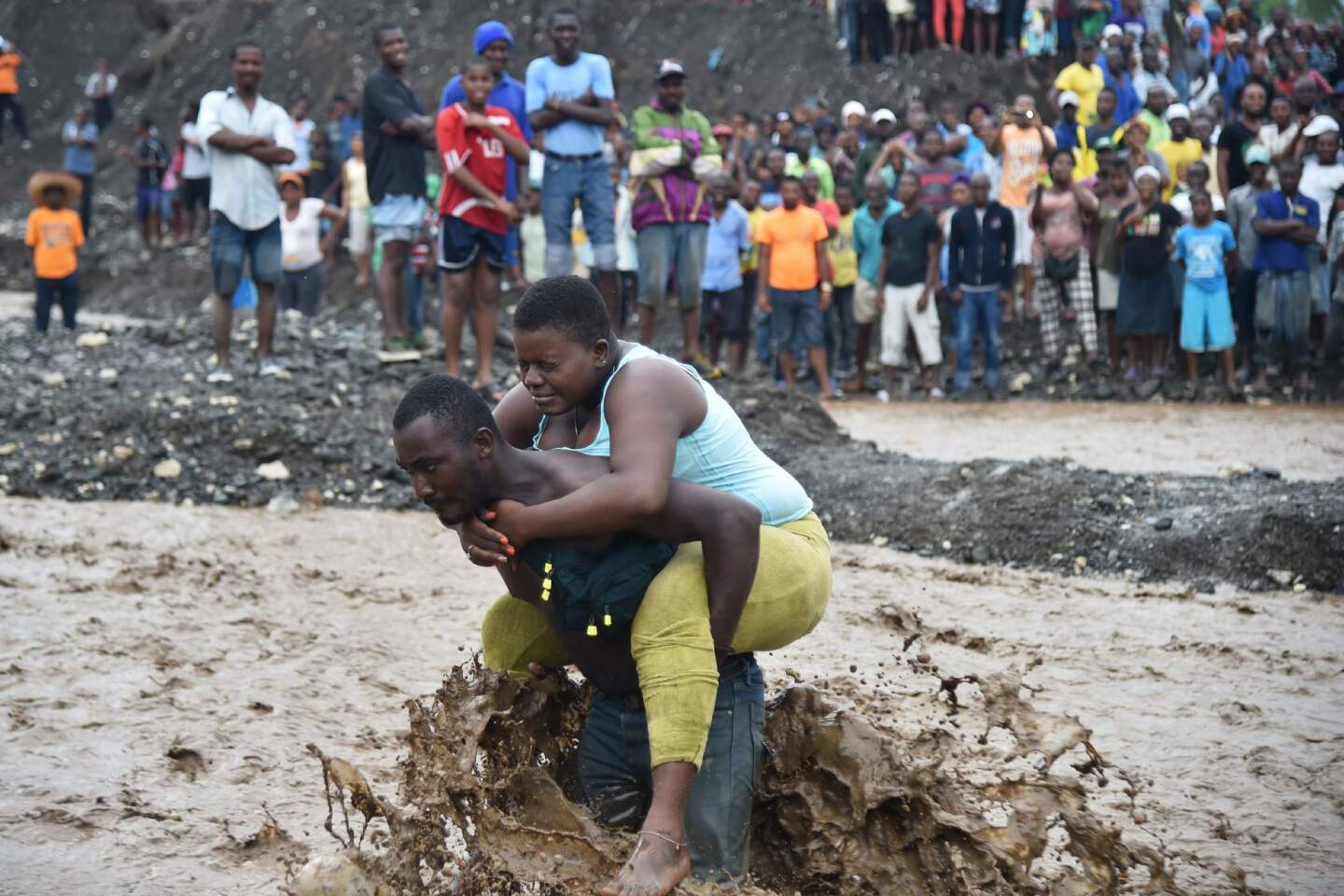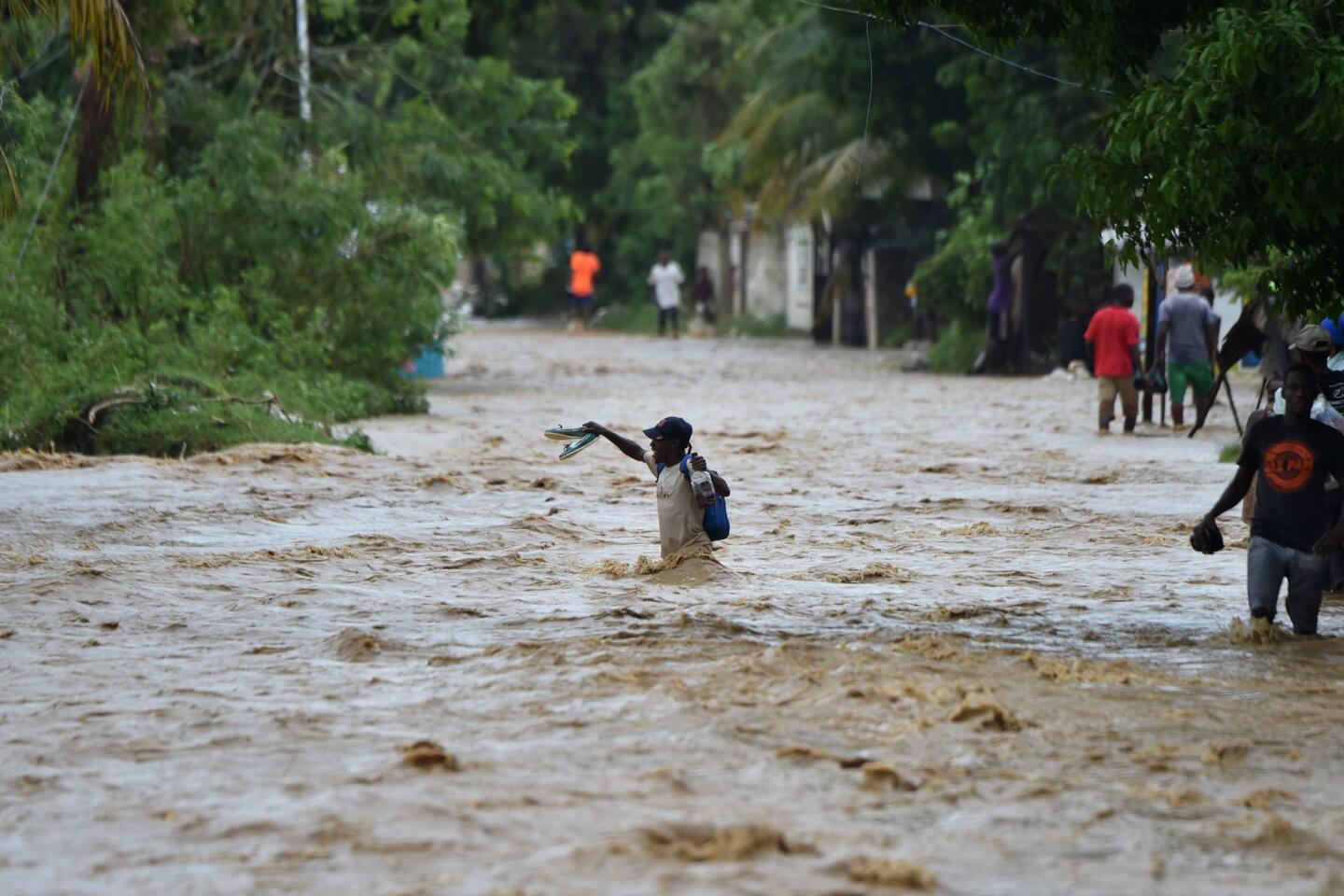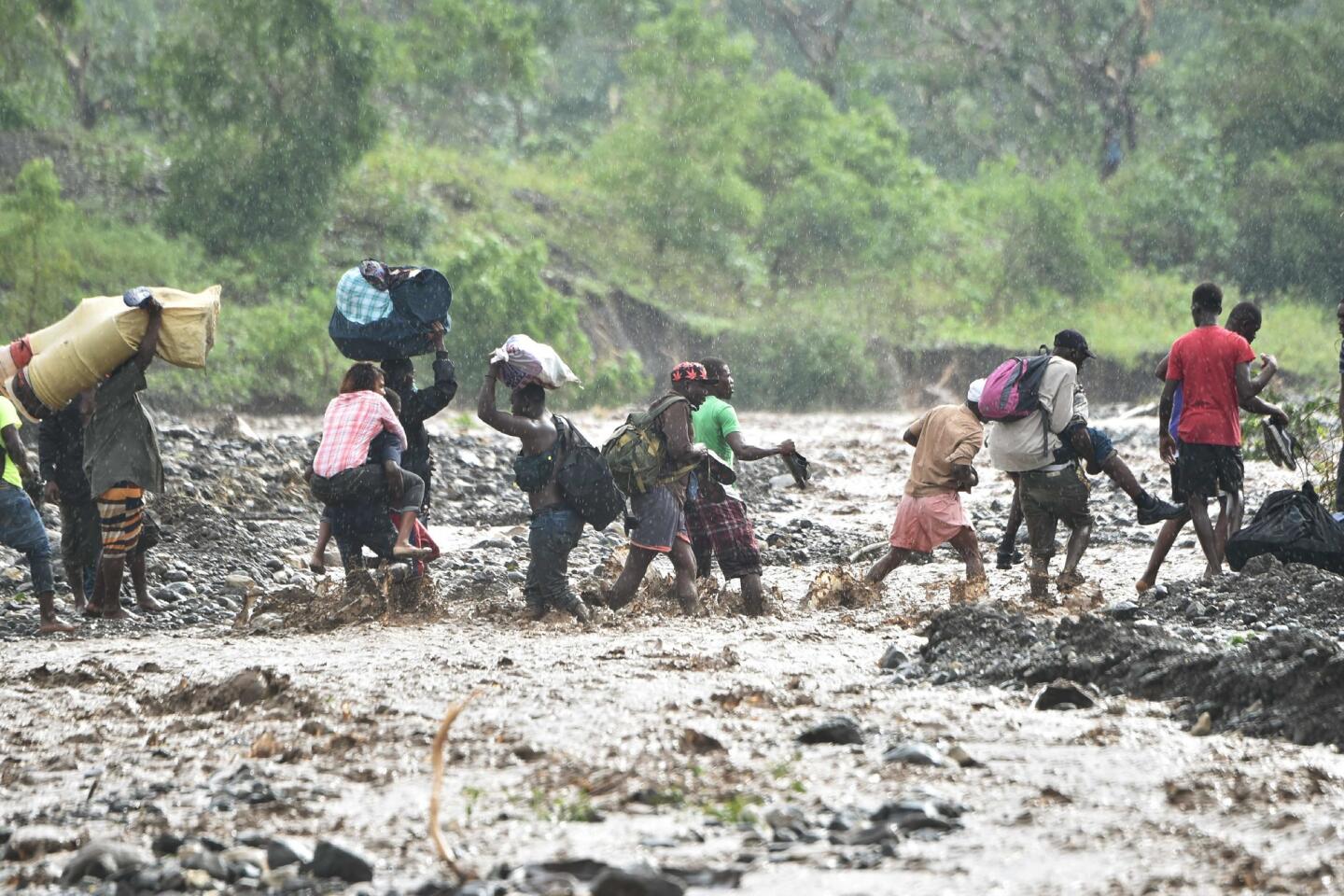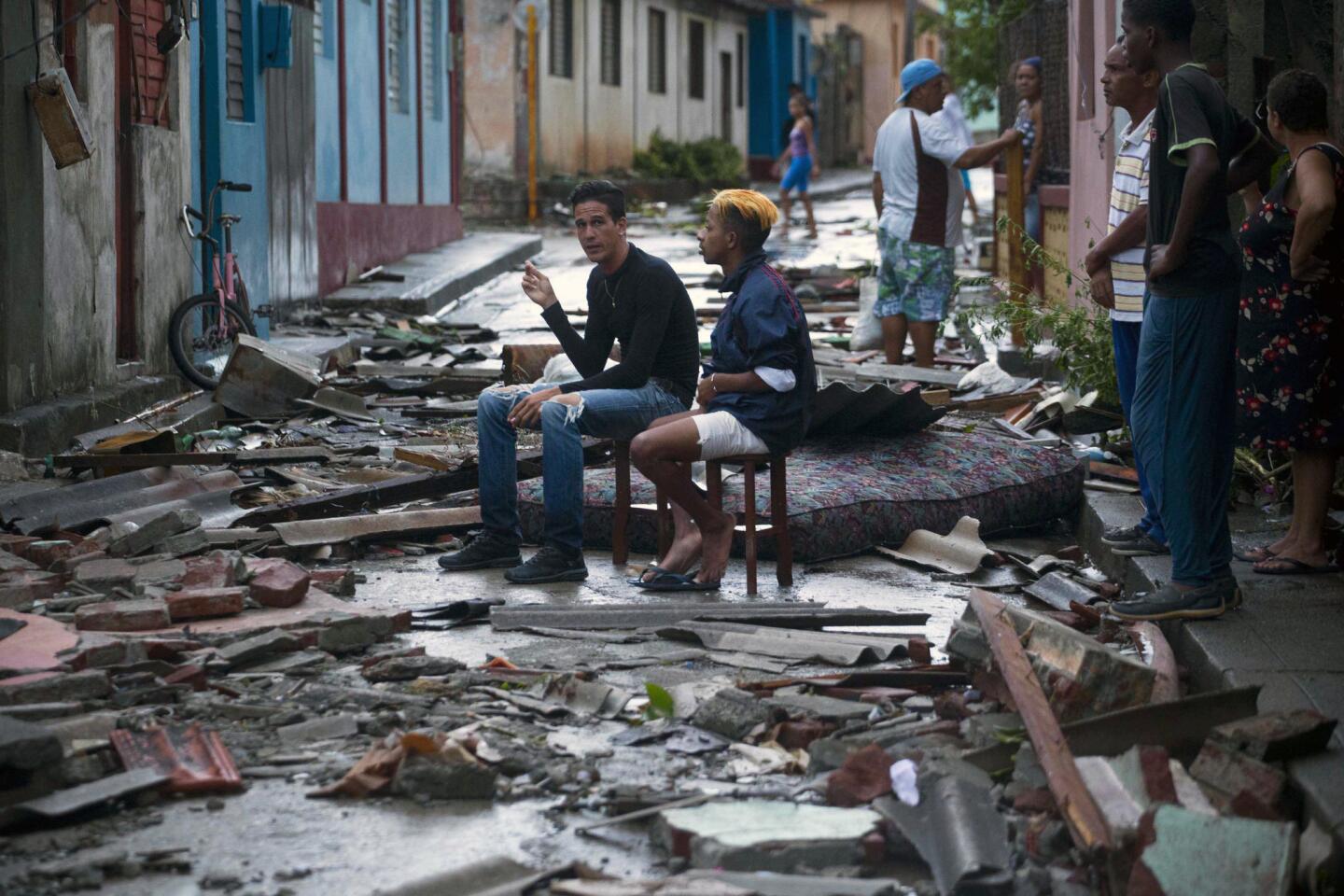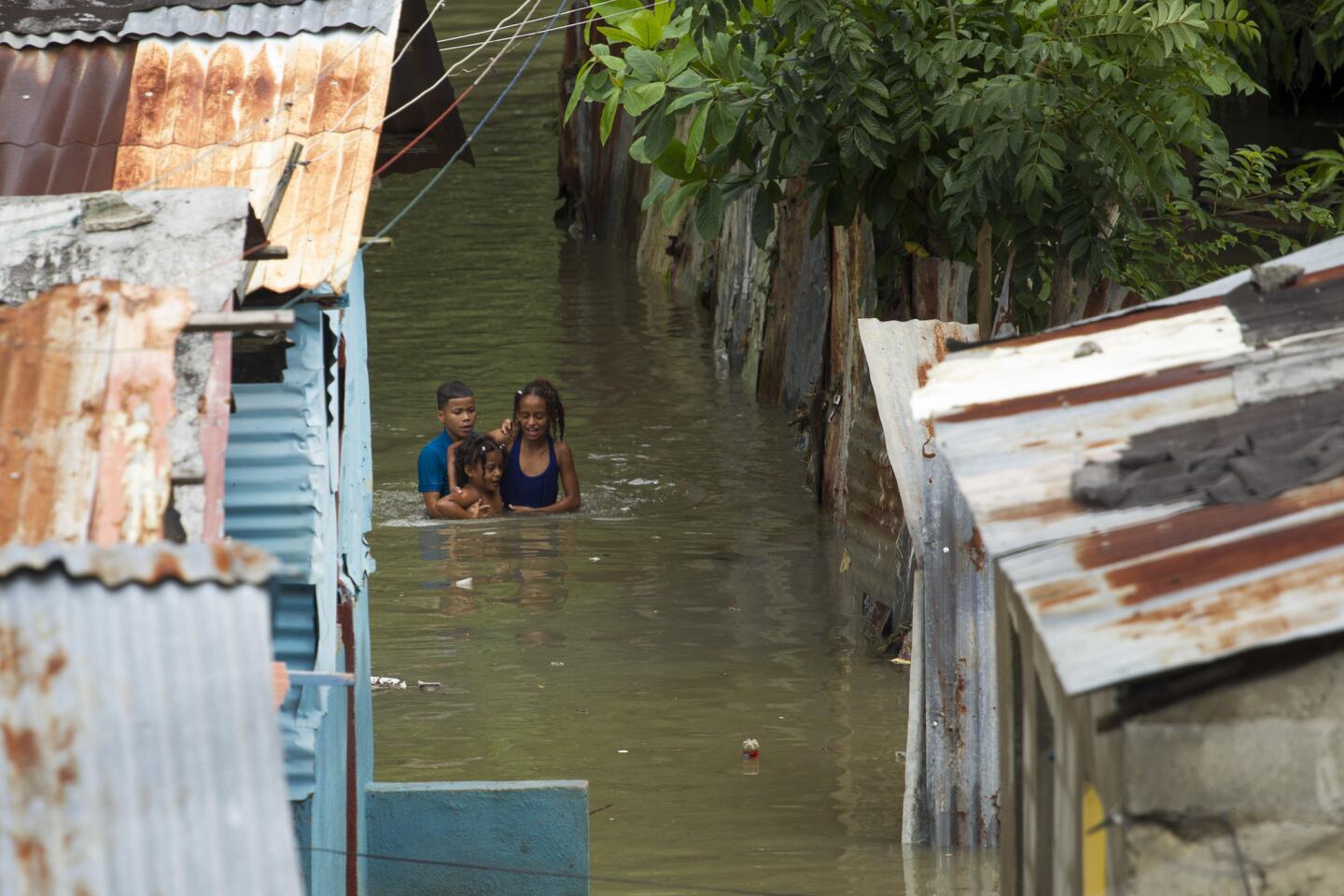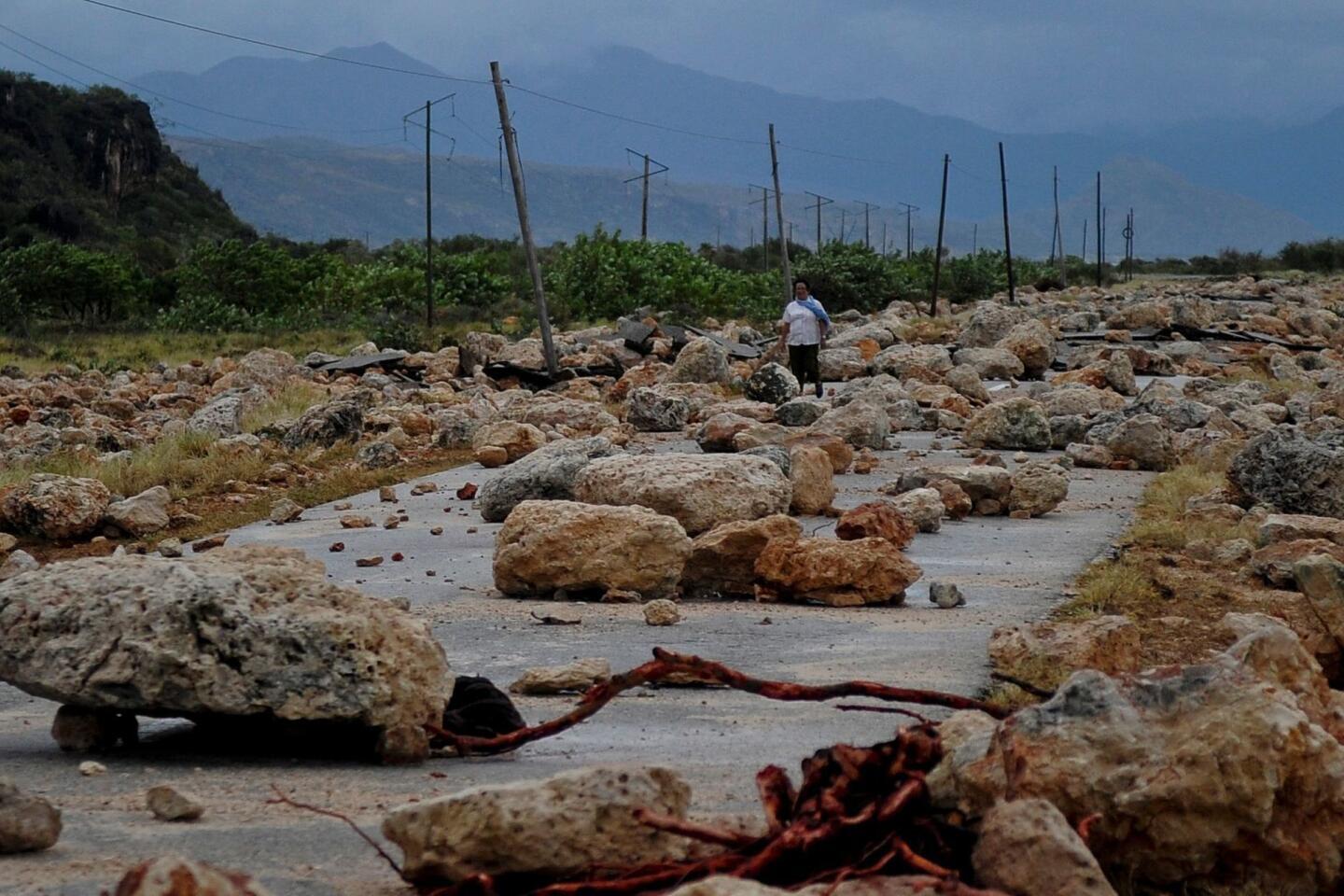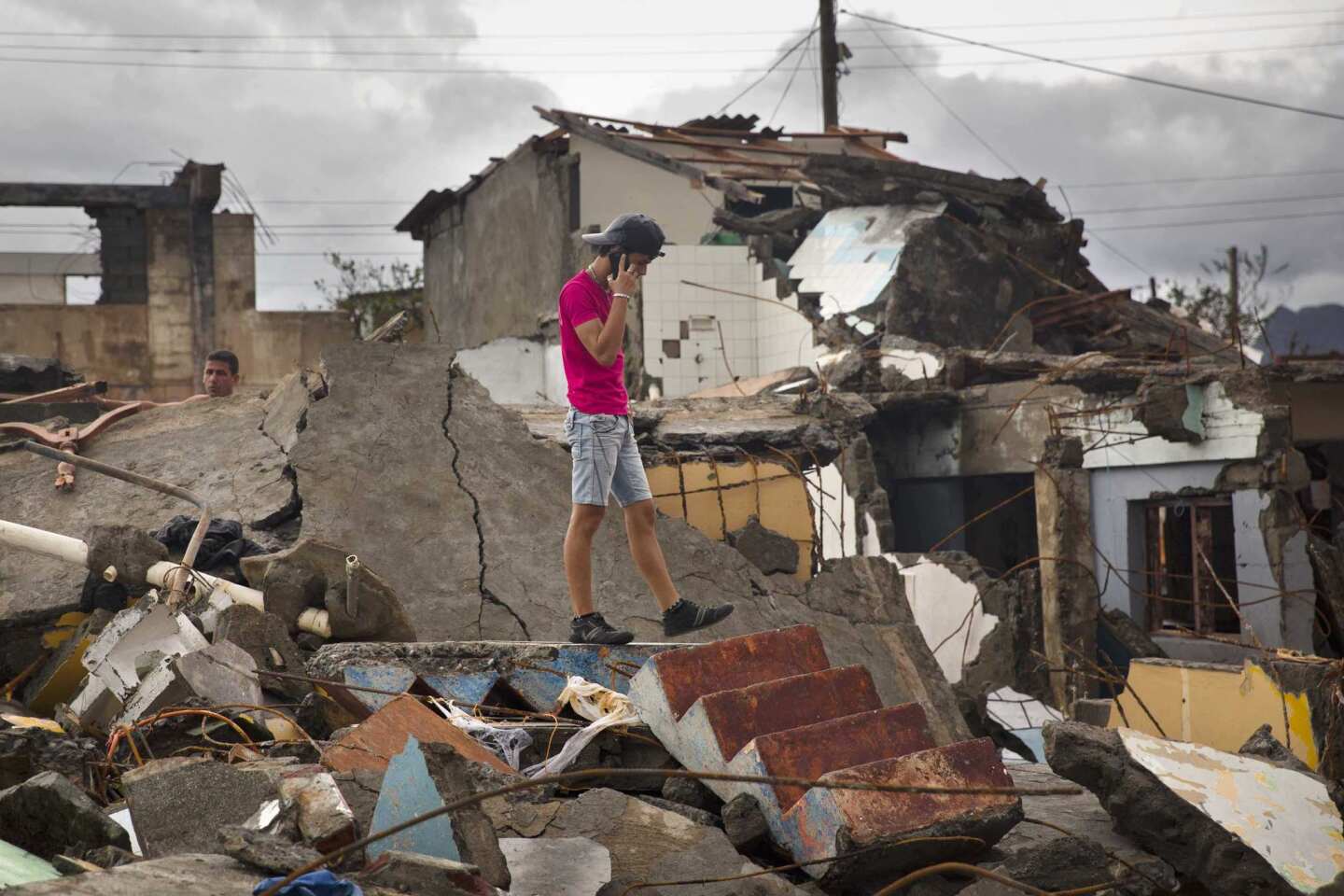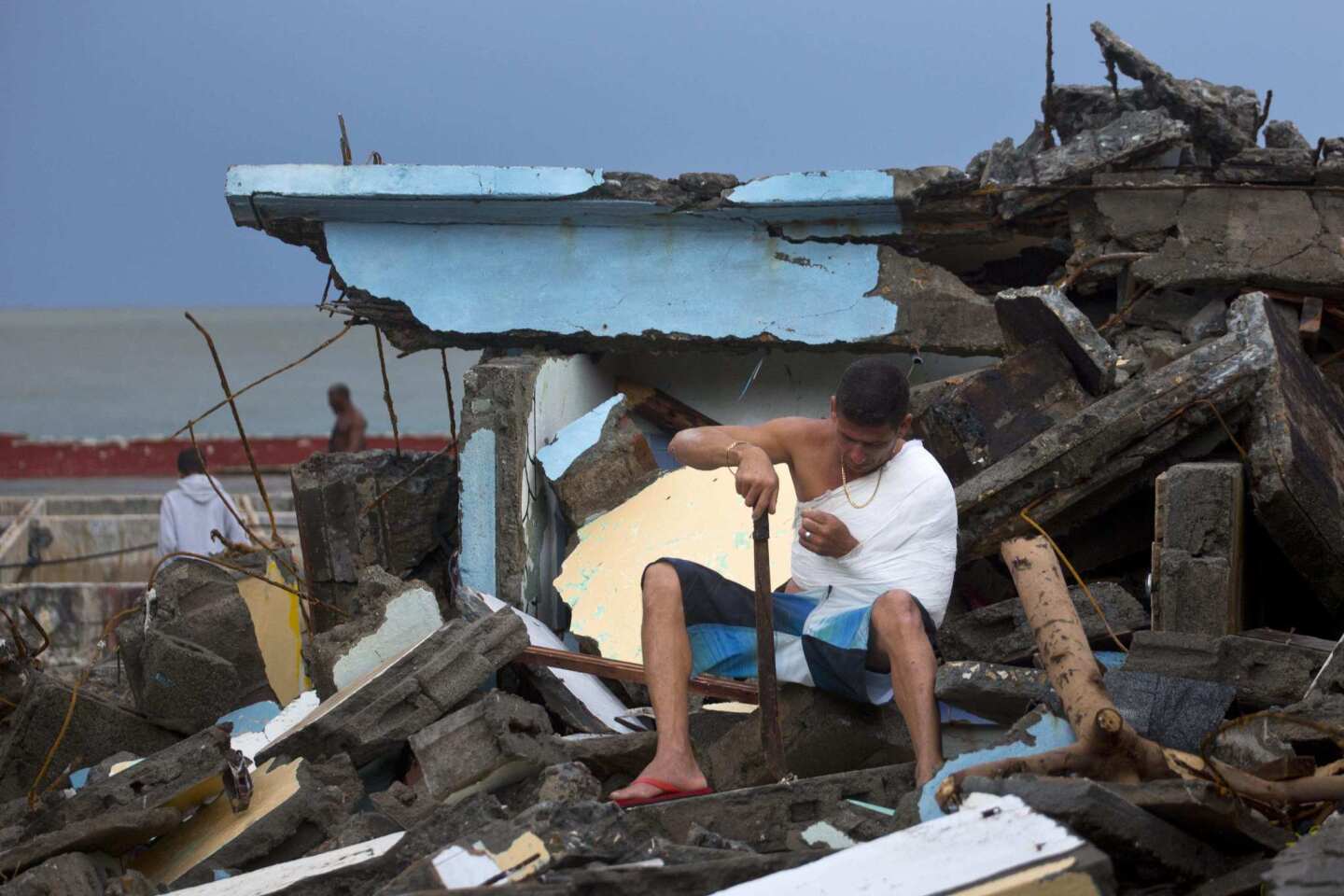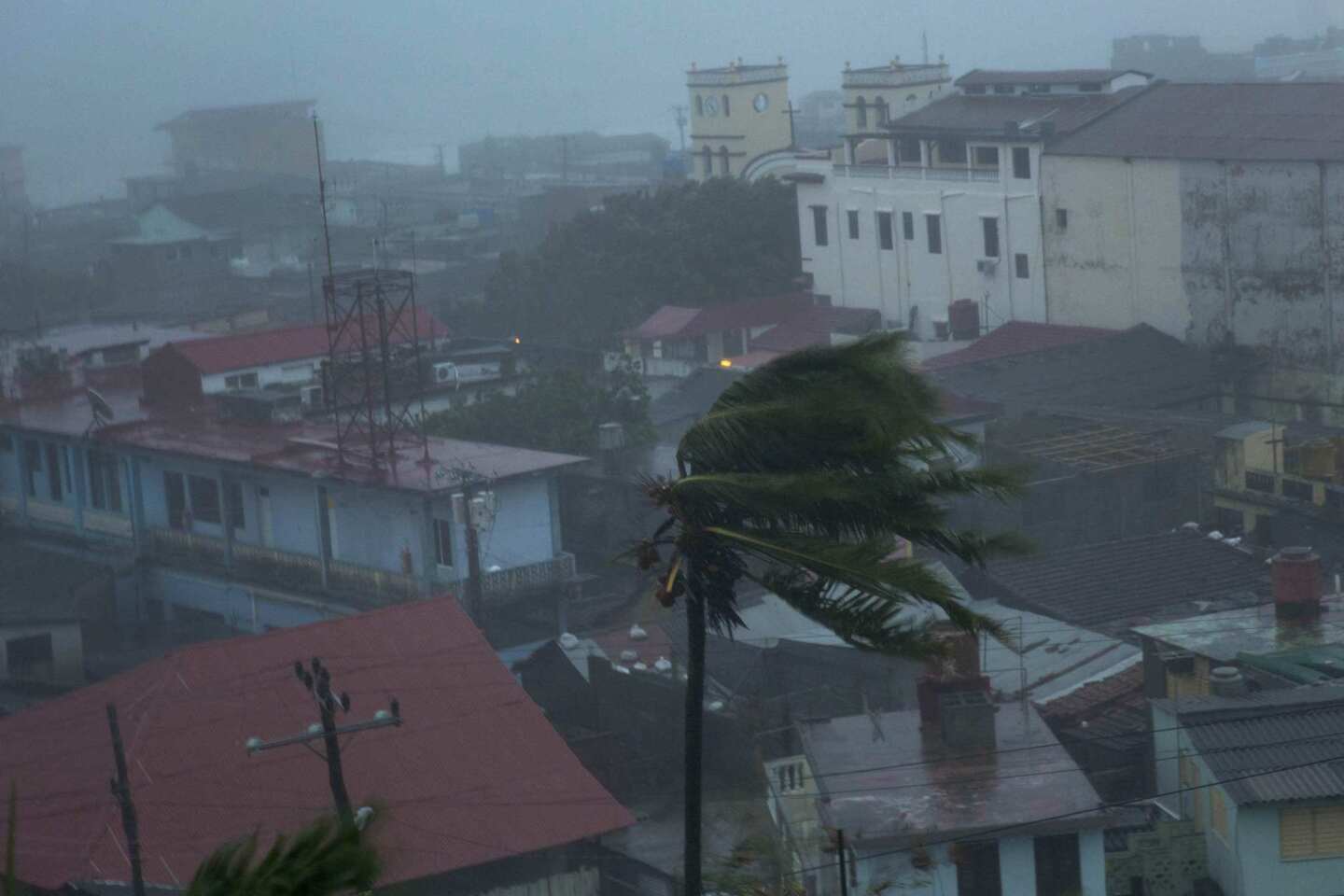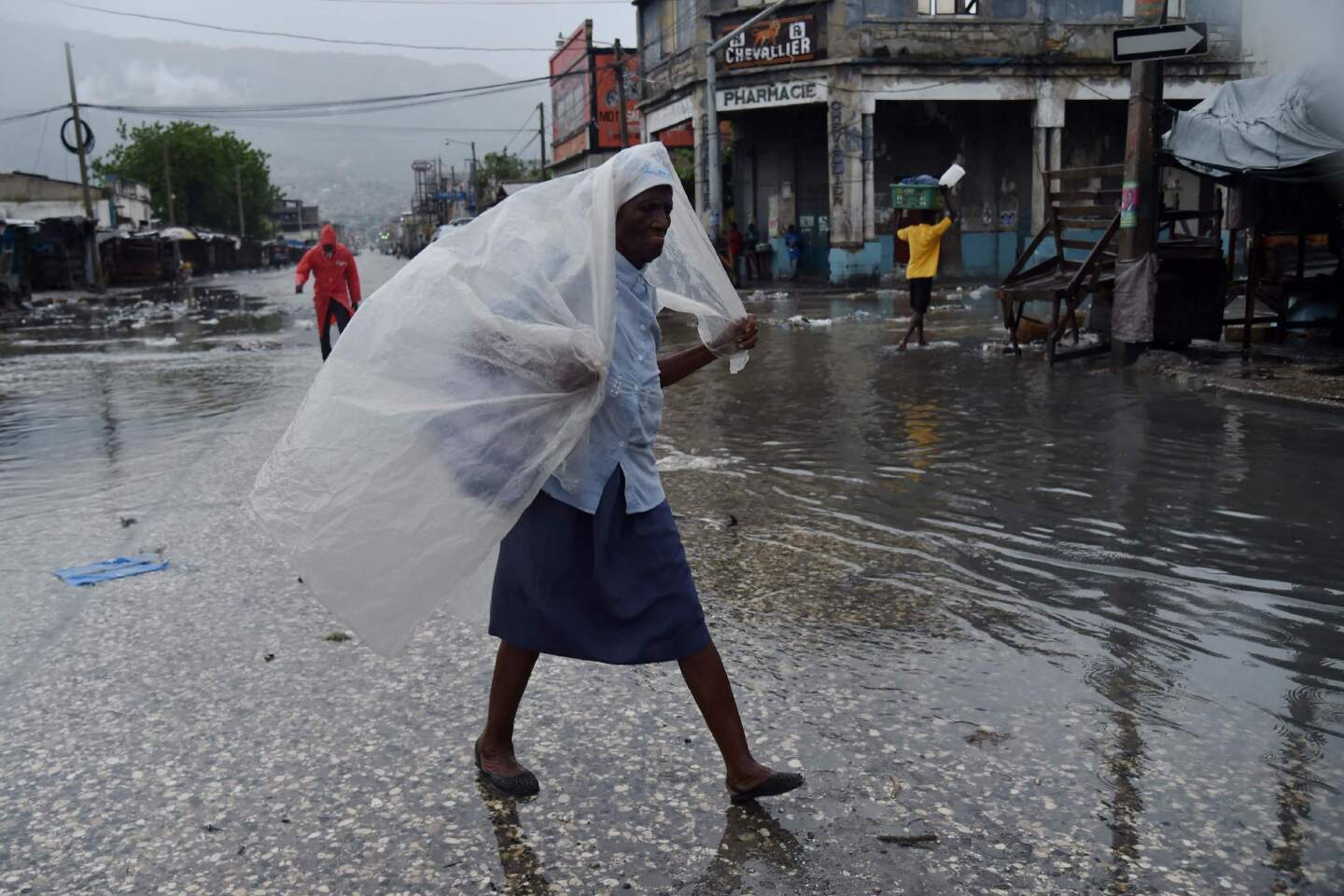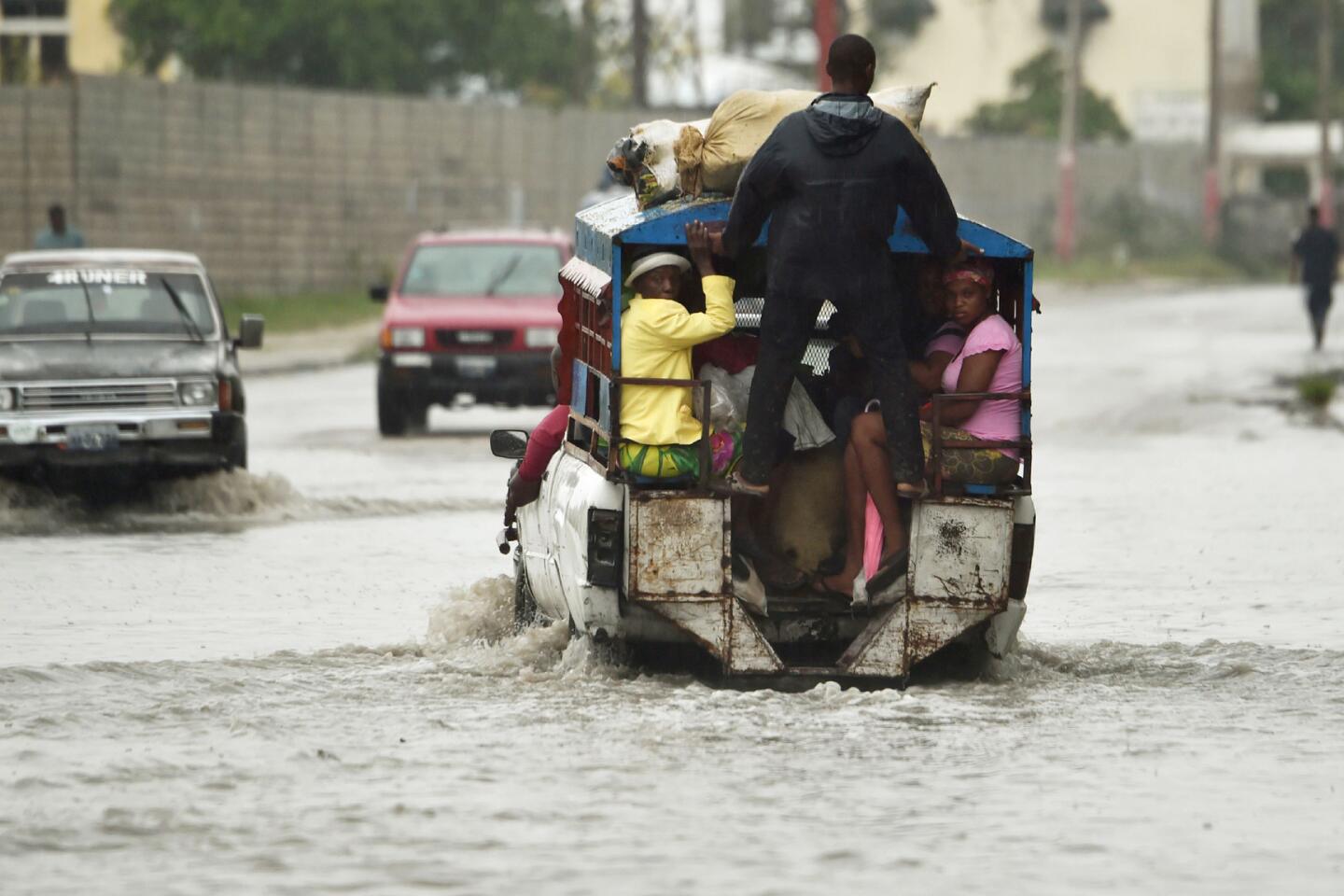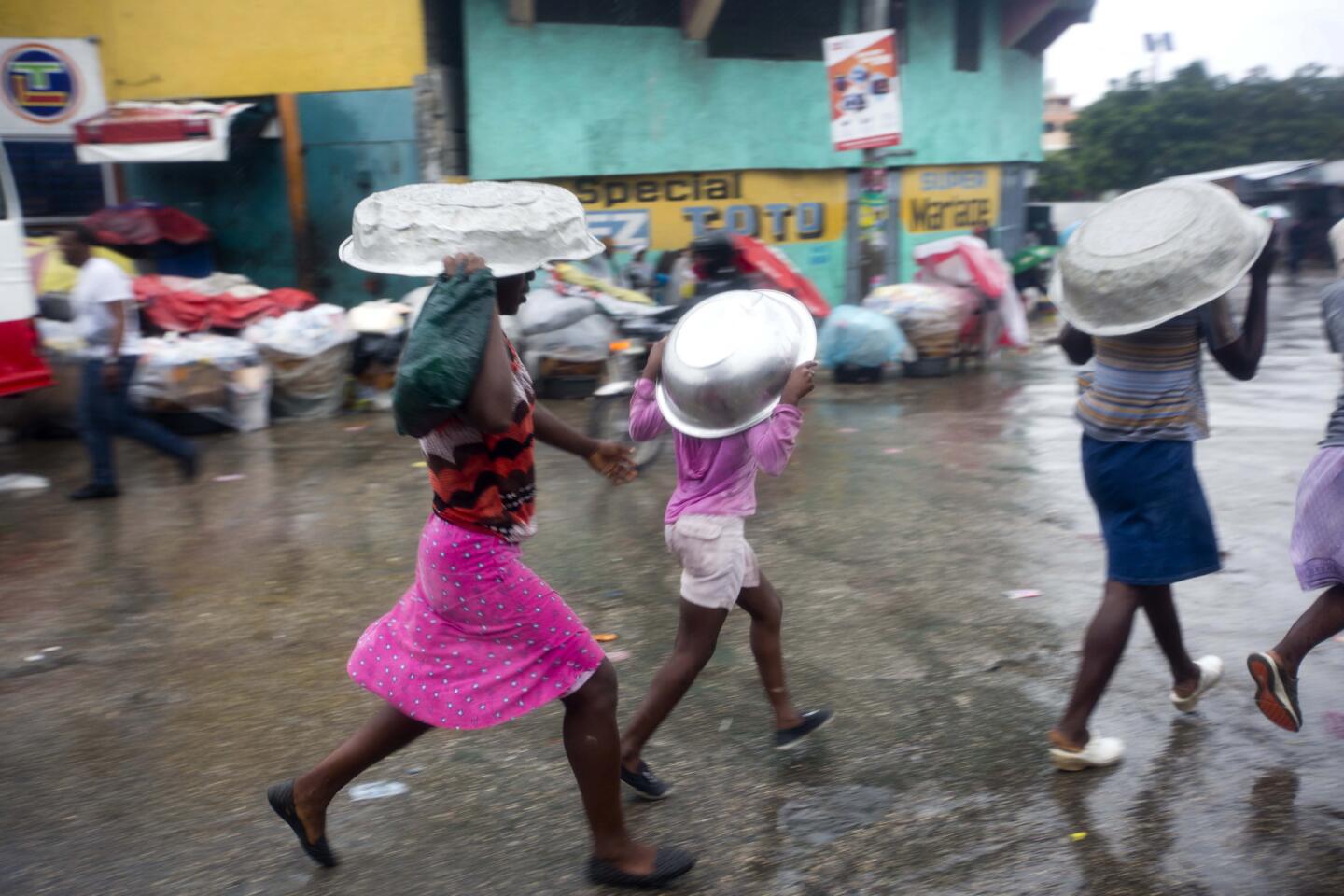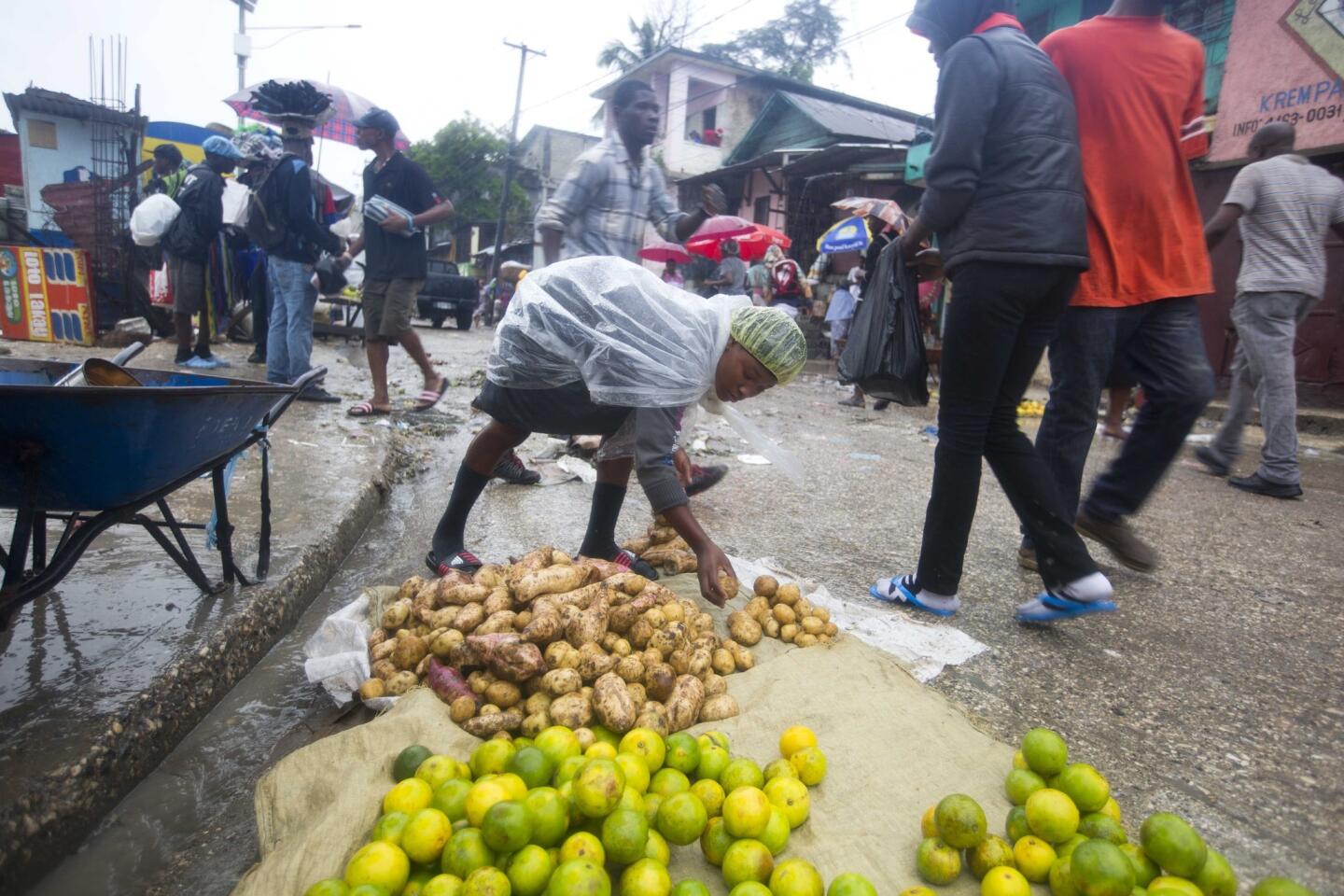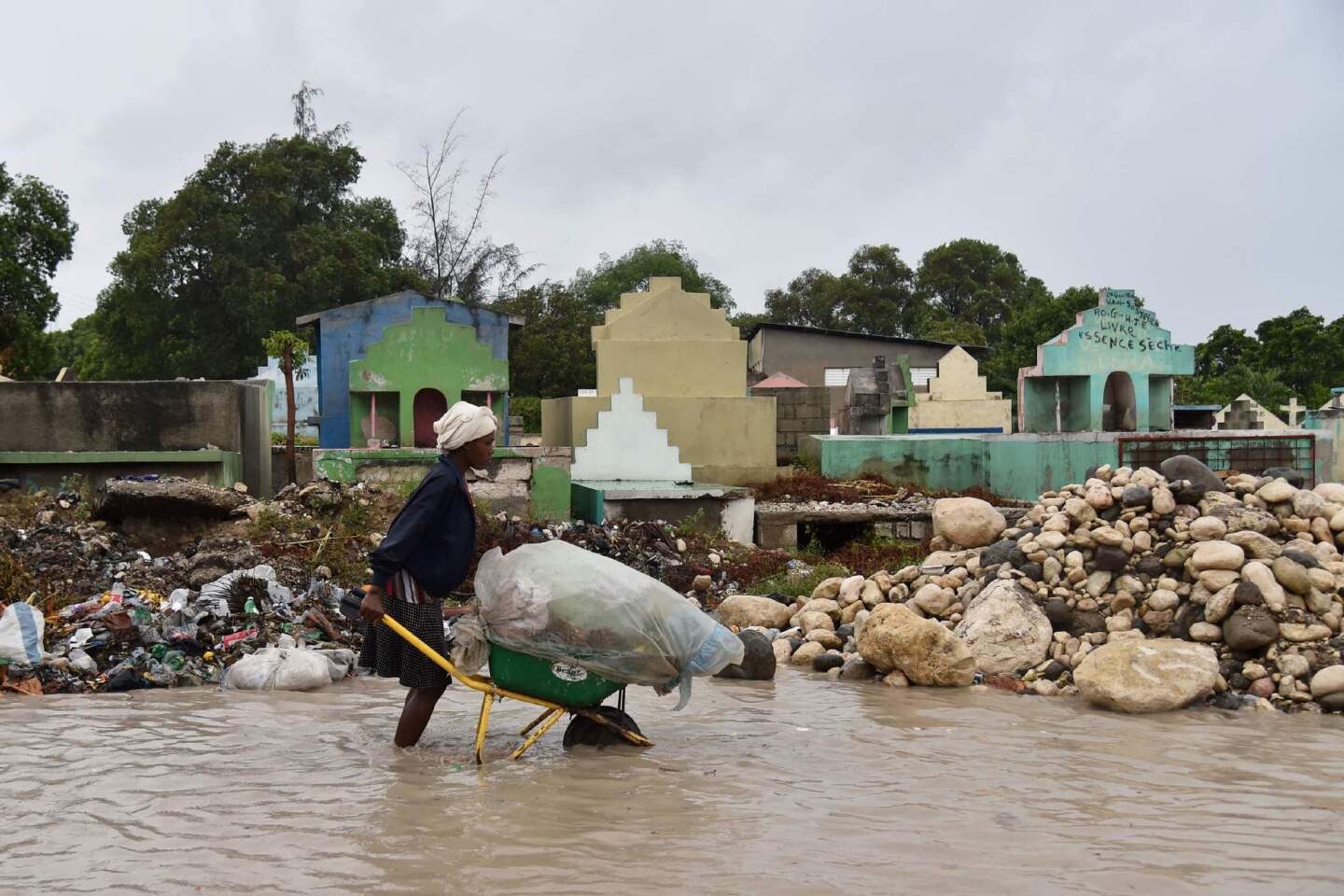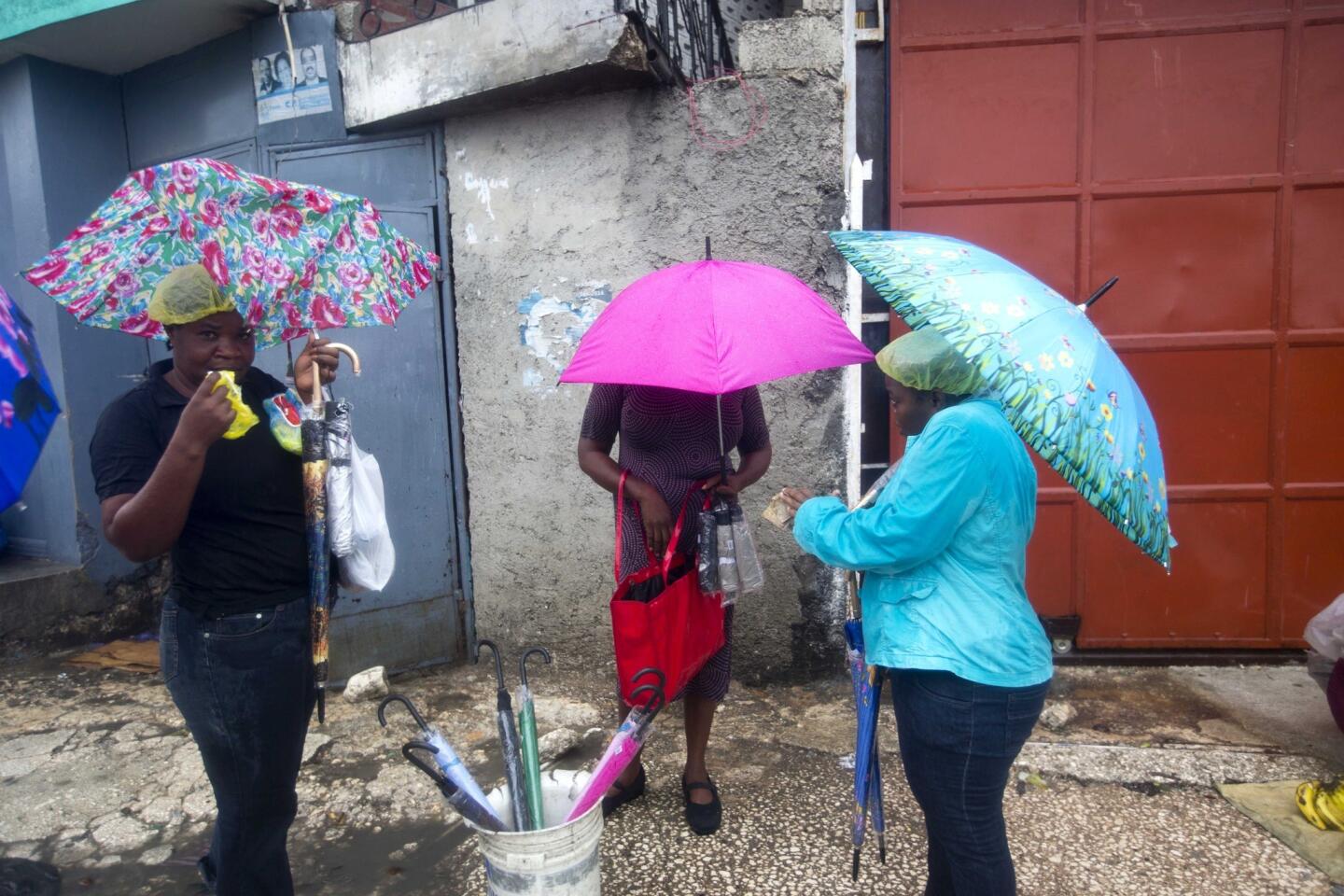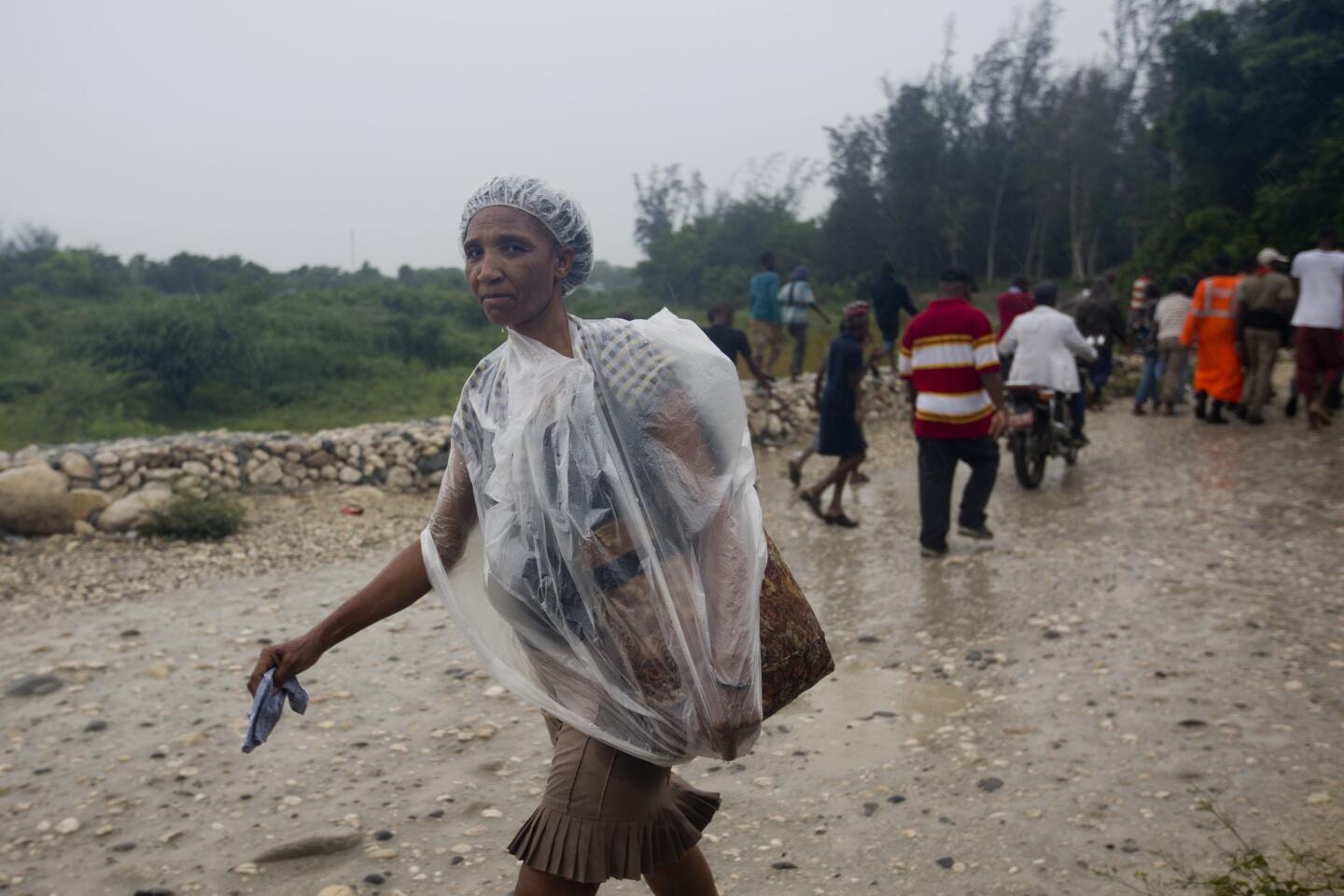Hurricane Matthew heads toward the U.S. after leaving a trail of destruction in Cuba
- Share via
Reporting from Havana — Hurricane Matthew hurtled toward the United States on Wednesday after battering Cuba with torrential rains and 145 mph winds.
No deaths were reported in Cuba, even after a massive storm surge with waves as high as 26 feet toppled apartment buildings and washed out bridges on the island’s northern coast. More than 1 million Cubans were evacuated from their homes, according to state-run television channel Cubavision.
The hardest hit region was Baracoa, a municipality of 80,000 near the eastern tip of Cuba, whose streets on Wednesday were littered with bricks, mattresses and other muddy debris. High winds and massive waves stripped away rooftops, knocked out power and cut off roads to the city overnight.
A major bridge used to access the region was washed out, and several coastal highways were blocked by boulders thrust ashore by the tempestuous sea.
For all the destruction, there could have been much more. Forecasters thought the hurricane might hit Santiago de Cuba, the island’s second-biggest city. But it changed course, traveling up Cuba’s sparsely populated eastern coast and sidestepping major population centers.
Haiti and the Dominican Republic, where the storm hit Monday night, were not so lucky.
The Category 4 hurricane, deemed the most powerful Caribbean storm in nearly a decade, killed at least five people in Haiti and four more in neighboring Dominican Republic. There also were reports of one person killed in Colombia and another on the island nation of St. Vincent and the Grenadines.
With schools, roads and bridges destroyed and at least 10,000 people displaced from their homes in the island’s south, “Haiti is facing the largest humanitarian event witnessed since the earthquake six years ago,” said United Nations official Mourad Wahba.
Many in Haiti have been living in tents and other makeshift shelters since the earthquake in 2010. The country has been in political crisis and without an elected president since 2015, when the last round of elections were declared fraudulent by several front-runners.
Haiti was planning to hold a new presidential election Sunday. But with schools and other polling places being used as emergency shelters, Haiti’s government decided to postpone the vote.
The U.S. government said it has sent experts to Haiti to assess the damage and will provide $1.5 million in food and disaster assistance.
A team of about 200 U.S. military personnel and nine helicopters have been sent to Haiti to support disaster relief operations at the request of the Haitian government, said Adm. Kurt Tidd, commander at U.S. Southern Command, which oversees military operations in the Caribbean and Central and South America.
After pummeling Haiti and Cuba, the hurricane was headed for the Bahamas on Wednesday, where residents and tourists in the capital of Nassau were taking cover.
Officials in the U.S. urged millions of people to evacuate the southeastern coast of the country and said the hurricane threatened to hit as soon as Thursday.
“It you’re able to go early, leave now,” Florida Gov. Rick Scott warned coastal residents in his state.
South Carolina Gov. Nikki Haley also gave evacuation orders for several coastal counties.
Meteorologists said the storm could hit Florida late Thursday and leave a path of destruction up the East Coast over the weekend.
President Obama urged residents of Florida, Georgia, South Carolina and North Carolina to prepare to evacuate even if they don’t expect it to be necessary, calling Matthew a “serious storm” as he met with officials at Federal Emergency Management Agency headquarters in Washington on Wednesday.
“If there is an evacuation order in your community, you need to take it seriously,” Obama told reporters after meeting with officials at FEMA. “Even if you don’t get the full force of the hurricane, we are still going to be seeing tropical force winds, the potential for a storm surge, and all of that could have a devastating effect.
“This is something to take seriously,” Obama added. “We hope for the best, but we want to prepare for the worst.”
He also called on Americans to consider offering help and contributions for those hard hit by the storm already.
In Cuba, government officials credited widespread evacuations before the storm with saving lives.
The country developed a sophisticated hurricane response system in the wake of Hurricane Flora, a 1963 storm that killed 1,750 people on the island. The system includes standing evacuation plans for every household and frequent drills. When a big storm like Matthew approaches, people whose homes are at risk are evacuated to shelters, while others move in with friends or neighbors who live in safer structures.
Times staff writer Linthicum reported from Mexico City and special correspondent Lopez reported from Havana. Christi Parsons and W.J. Hennigan contributed to this report from Washington, D.C.
ALSO
Hurricane Matthew pummels Haiti and Cuba on route toward U.S.
Canadian government says it will implement a nationwide carbon tax by 2018
Colombian voters reject peace deal between the government and FARC rebels
UPDATES:
4 p.m.: This article was updated with information about the U.S. support for the relief effort in Haiti.
1:30 p.m.: This article was updated with new details throughout.
10:50 a.m.: This article was updated with additional details about the damage in Cuba.
10:20 a.m.: This article was updated with remarks from President Obama.
This article was originally published at 9:40 a.m.
More to Read
Sign up for Essential California
The most important California stories and recommendations in your inbox every morning.
You may occasionally receive promotional content from the Los Angeles Times.
